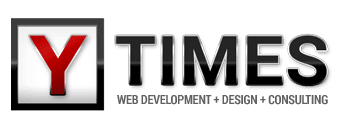Templates and RTML
Turbify templates are written in a programming language called RTML. So,
if you want to edit or write your own templates, you need to learn RTML!
RTML is neither a server-side (such as ASP) nor a client-side technology (such
as JavaScript). It's probably easiest to think of RTML as a custom design
language that only works for Turbify. RTML uses the values and properties
of your store as its input, does various manipulations, and outputs pure HTML.
The advantage for you the user is that you don't have to know HTML or how to
connect to databases and retrieve product information; you can build a fully
functioning store by only entering the necessary information about your products
and services by filling out easy-to-use forms. Turbify provides you with a
set of templates that will take your simple input and create the necessary HTML.
Item pages and other pages such as info or privacypolicy use different types (when
you edit these different pages, you see different input fields.) In editor
version 2.0, different type pages use different templates. For instance, item
and section pages use the page. template, the site map page (ind.html)
uses the index. template, etc. In editor version 3.0, this has been
simplified, so every page in your store uses one template, storetemplate.,
and that template figures out how to generate the HTML page based on what type
of page we are talking about.
You can only program in RTML and work on templates live/online in the Yahoo!
Store environment, using the template editor. So, no offline editor such as
notepad can be used to create your code. (Well, this is not 100% true... There
is a third-party software called the RTML
Template Transfer Utility. That utility can download templates and store
them in a text file - although in a somewhat proprietary format. Those templates
can then be uploaded into any other Turbify.)
Just like HTML, RTML templates are evaluated from top to bottom. So, you have to
build your template in the same logical order as you would in HTML.
Unlike HTML, RTML allows you to use logical programming expressions, such as
variables, subroutines, conditional statements (IF…THEN), or iterations (FOR
EACH….). Because of this, RTML is in fact a programming language.
Why is this useful? Well, it means that a single RTML template can output
different HTML depending on the local properties and global variables. For
instance, if you were to change the property of Page-format from Top-Buttons to
Side-Buttons in the Variables form, the template will automatically produce the
necessary HTML to display the buttons on the side of your page.
Take the following very simple template, for example:
Test() HEAD TITLE @name BODY TEXT "Hello, my name is " TEXT @name
If you edit any page and change the template name to test, the page
would write a personalized message on the page, "Hello, my name is
..." where ... would be replaced with whatever the page had in the name
field.
There are about 80 to 90 RTML expressions, some of which have direct HTML
equivalents. Other expressions perform string and image manipulations,
iterations, or logical evaluations such IF or WHEN.
Templates can call other templates; this makes it possible to re-use common
elements - such as navigation buttons - in different templates.
How do you invoke or "run" templates? Well, the only way to execute a
template is by referring to it from within a page, and hit update. What you then
see is an HTML page generated by the underlying template. So, once you publish
your site the templates are "out of work" – they have generated the
final static HTML pages that will be visible to the outside world.
While you can gain complete control over the design of your store with RTML, the
fact that it is neither a client-side or server-side technology means that there
are some things you cannot do with RTML, such as client-side validation or
pulling dynamic data from a database. Also beyond your control are the checkout
pages, the search result page, or shipping and tax calculations.
